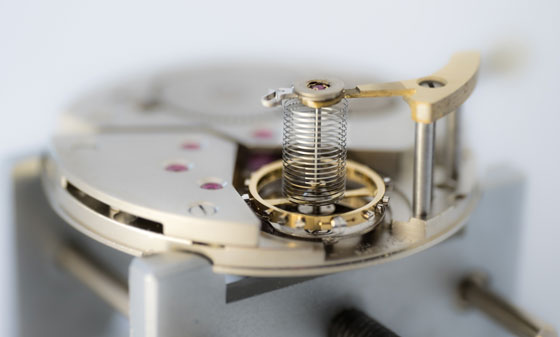
Few watch manufactures have the indispensable expertise required to develop, produce and assemble the parts composing regulating organs. Precision Engineering is one of them and produces key components such as balance-springs, balance-wheels, pallet-levers and escape-wheels.
Whether in large series or as one-offs, the firm has the know-how to formulate and produce the ferromagnetic or paramagnetic alloys intended for balance-spring production.
Achieving isochronism on the balance & hairspring assembly is one of the main goals for the watchmaker. With a flat hairspring, the opening is not concentric and leads to friction due to movement of the centre of gravity. As a result this disrupts the isochronism. Precision Engineering is continuously working to develop its expertise in order to provide its customers with consistently high-performance products. It is with this in mind that the company decided to take on a new challenge by developing a cylindrical hairspring. Invented in the 18th century by John Arnold, an English watchmaker, the cylindrical hairspring is reminiscent of an endless screw or a corkscrew. It rises perpendicularly around the upper stem of the balance spindle. A frequent feature on marine chronometers at the time, it offers the advantage of developing concentrically, and therefore geometrically, given that it works perfectly on the axis of its pivots, unlike the flat hairspring, whose opposite ends have a tendency to exert force on the pivots, despite Phillips or Breguet terminal curves, which were specifically developed to partially correct the non-concentric opening of the hairspring. Thanks to the cylindrical hairspring, fitted with a Breguet curve attached at two points, friction on the pivots is reduced and isochronism is greatly improved.
In return, due its specific shape, the cylindrical hairspring requires more space. It is also extremely difficult to produce, taking ten times longer than a traditional hairspring. Very few companies have the expertise and skill required to be able to produce a hairspring like this. In order to rise to this technical challenge, Precision Engineering had to develop new tools and put new procedures in place. A cylindrical hairspring is designed for highly exclusive watches, produced in small numbers, or even for unique pieces.
July 12, 2018


 News
News